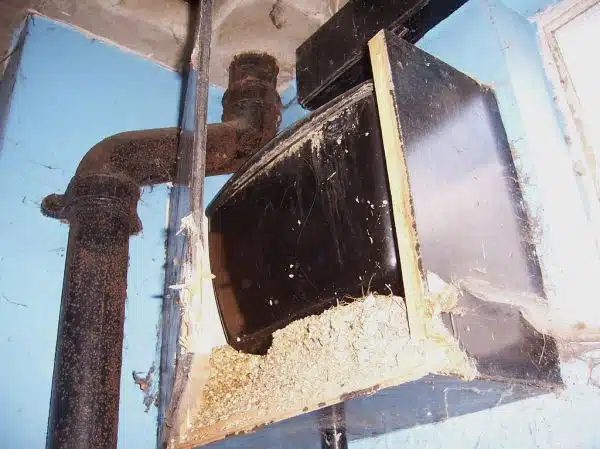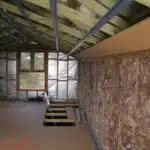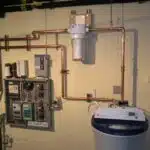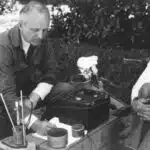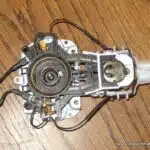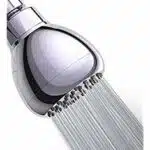Vermiculite is a naturally occurring mineral that has been widely used in various industries due to its unique physical properties. It is a hydrated magnesium-aluminum-iron silicate mineral that expands when heated, forming lightweight and porous particles. Vermiculite has a wide range of applications, from insulation and construction materials to soil conditioning and horticulture products.
As a vermiculite expert, I have witnessed the increasing demand for this versatile mineral in recent years. While many people are familiar with vermiculite as a component of potting soil or insulation material, the full potential of this mineral is often underestimated. In this article, I will provide an overview of what vermiculite is, how it is processed, and its various uses in different industries. Whether you are a homeowner looking for an organic soil conditioner or a professional builder seeking sustainable construction materials, this article will give you valuable insights into the benefits of using vermiculite.
What Is Vermiculite?
Concerns about the safety of vermiculite have been raised in recent years, leading some to question its use. However, it is important to note that not all vermiculite is created equal. The type of vermiculite that has caused concern is contaminated with asbestos, a known carcinogen. This contaminated vermiculite was primarily mined from a specific site in Libby, Montana during the 20th century.
Despite this contamination issue, there are many uses and benefits of vermiculite when it comes to gardening and horticulture. Vermiculite is a naturally occurring mineral that expands when heated, creating a lightweight and porous material that can hold onto water and nutrients. In gardening, it is often used as a component of soil mixes or as a standalone growing medium for seed starting.
One of the key benefits of vermiculite is its ability to improve soil structure and drainage. Its porous nature allows air and water to move freely through the soil, preventing waterlogging or compaction. Additionally, because vermiculite holds onto moisture so well, it can help prevent plants from drying out too quickly during hot weather or drought conditions. Overall, vermiculite has proven to be an effective tool for gardeners looking to improve their soils and boost plant growth.
Moving on from the uses and benefits of vermiculite, let’s take a closer look at its history and how it came to be such an important component in modern gardening practices.
The History Of Vermiculite
History of Vermiculite
Vermiculite is a naturally occurring mineral that has been used for various purposes for centuries. Its origin and evolution can be traced back to the discovery of large deposits in the United States, South Africa, and other countries in the early 20th century. These deposits were initially used for insulation and fireproofing in buildings due to their unique properties.
As the significance and role of vermiculite in modern industry increased, so did its demand. It was found that vermiculite could also be used as a soil amendment to improve drainage and retain moisture, making it an ideal component for horticulture. In addition, it was discovered that vermiculite could be expanded by heating, resulting in a lightweight material with excellent insulation properties.
Today, vermiculite is widely used in various industries including construction, agriculture, horticulture, and even aerospace. Its unique properties make it a valuable resource that continues to evolve as new applications are discovered. As we move forward into the future, it is clear that vermiculite will continue to play an important role in shaping our world.
Transition: Now that we have explored the history and significance of vermiculite, let us delve deeper into how this valuable mineral is mined and processed.
How Vermiculite Is Mined And Processed
Like a miner’s pickaxe chipping away at the earth, the mining process for vermiculite requires patience and precision. It involves extracting the mineral from underground deposits using various techniques such as open-pit mining, shaft sinking or strip mining. Once mined, vermiculite undergoes a rigorous processing phase that transforms it into a versatile product with many uses.
The mining process of vermiculite can have both positive and negative environmental impacts. On one hand, the extraction of vermiculite helps support local economies by providing jobs and resources. However, the process can also lead to soil erosion, water pollution and habitat destruction if not carried out responsibly. As experts in this field, we are constantly seeking ways to minimize any adverse effects on the environment while maximizing the benefits for all stakeholders involved in this industry.
It is crucial for users of vermiculite to understand its physical properties before using it for any application. These properties include its light-weightedness, high absorbency rate and fire-resistant qualities. When combined with other materials such as cement or plaster, vermiculite can be used in building insulation, fireproofing and soil conditioning products. Understanding these physical properties will enable users to maximize the potential benefits of this versatile mineral while minimizing any potential risks associated with its use.
Transitioning into our next section about ‘the physical properties of vermiculite’, let us delve deeper into how these properties make it an essential ingredient in many industries today.
The Physical Properties Of Vermiculite
The physical properties of vermiculite are what make it a versatile material for various applications. One important property is its particle size, which ranges from very fine to medium-sized grains. Vermiculite with finer particles can be used as an ingredient in potting soil mixtures to improve water retention and nutrient availability for plants, while coarser grades are better suited for use as insulation or as a lightweight aggregate in concrete.
Vermiculite’s ability to retain water is another crucial property that makes it useful in agriculture and horticulture. The mineral has a high cation exchange capacity (CEC), which means it can hold onto positively charged ions such as calcium, magnesium, and potassium, releasing them later when needed by plant roots. This property also allows vermiculite to absorb and retain moisture, making it ideal for use in hydroponic systems or as a soil amendment that helps prevent drought stress in plants.
In addition to its particle size and water retention properties, vermiculite also exhibits excellent insulation qualities due to its low thermal conductivity. When used as an insulator, the mineral traps air between its layers, creating pockets of dead air space that reduce heat transfer by convection. This makes vermiculite an effective choice for insulating attics, walls, and other areas where energy efficiency is a priority. Overall, the physical properties of vermiculite make it a valuable material with diverse applications across various industries.
As we move towards exploring the use of vermiculite as an insulation material, it is important to note that this mineral’s unique properties make it an exceptional choice for this purpose. With its low thermal conductivity and ability to trap air between layers, vermiculite can significantly reduce heat loss or gain through walls or ceilings. Its lightweight nature also makes it easy to handle during installation compared to other traditional insulation materials like fiberglass or cellulose.
Vermiculite As An Insulation Material
As an expert in the field of vermiculite, I must say that vermiculite insulation has been widely used for many years as a natural, non-toxic alternative to traditional synthetic insulation materials. Vermiculite insulation is composed of small pellets made from expanded vermiculite minerals. These minerals are mined and processed to create the final product. Vermiculite insulation offers several benefits including energy efficiency, soundproofing, and fire resistance.
One of the most significant benefits of using vermiculite insulation is its energy efficiency properties. Vermiculite has a high R-value, which means it can reduce heat loss through walls and ceilings. This property makes it an excellent choice for homes in colder climates where energy costs are typically higher. Additionally, vermiculite insulation can also provide soundproofing properties that help absorb unwanted noise from outside or inside a building.
However, like any other material, vermiculite insulation does have some drawbacks that need to be considered before use. One potential drawback is that some types of vermiculite minerals may contain asbestos fibers that can cause lung cancer if inhaled over long periods. Therefore, it’s crucial to ensure that the vermiculite being used is tested for asbestos content before installation.
In summary, vermiculite insulation is an excellent option for those looking for a natural and non-toxic alternative to traditional synthetic materials. It provides many benefits such as energy efficiency and soundproofing but should be installed with caution due to the potential presence of asbestos fibers in some types of vermiculite minerals. In the following section, we will discuss how vermiculite can be used in construction materials without compromising safety or quality.
Vermiculite In Construction Materials
Vermiculite is an extremely versatile mineral that has a wide range of construction applications. Its excellent thermal insulation properties make it an ideal material for use in structural applications where high temperatures are present, such as furnace linings and chimney flues. Because it is lightweight and easy to handle, vermiculite can also be used as an additive in concrete to improve its workability and reduce weight.
In addition to these structural uses, vermiculite can also be used in a variety of other construction applications. For example, it can be added to plaster or stucco to improve their fire resistance properties. It can also be used as a soil amendment to improve the drainage and aeration of soils in landscaping projects.
If you are considering using vermiculite in your next construction project, there are a few things you should keep in mind. First, it is important to choose the right grade of vermiculite for your specific application. There are different grades available that vary in size and chemical composition, so make sure you consult with a specialist before making your selection. Second, while vermiculite is generally considered safe for use in construction applications, it is important to wear protective gear when handling it due to the potential risk of inhaling fine particles.
- When using vermiculite in construction projects, always consult with a specialist to choose the right grade for your application.
- Vermiculite can be used as an additive in concrete or plaster to improve its properties.
- Protective gear should always be worn when handling vermiculite due to potential inhalation risks.
Moving forward from discussing the structural uses of vermiculite, we will now explore its benefits in horticulture applications. While many people may not think of vermiculite as an essential component of gardening or landscaping projects, this mineral can actually play a critical role in promoting healthy plant growth and soil quality. In the next section, we will discuss the unique properties of vermiculite that make it such a valuable tool for gardeners and landscapers alike.
The Benefits Of Vermiculite In Horticulture
Vermiculite is an incredibly versatile mineral that has numerous benefits in horticulture. Due to its unique physical and chemical properties, vermiculite is an excellent medium for growing plants. It can retain water and nutrients, increase aeration, and improve soil structure. Its neutral pH level also ensures that it does not affect the acidity or alkalinity of the soil.
One of the main benefits of using vermiculite in horticulture is its ability to improve plant growth. Vermiculite acts as a natural air conditioner, regulating soil temperature by keeping it cool during hot weather and warm during cold weather. This helps plants grow faster and healthier, ensuring maximum yield. Additionally, vermiculite can be used as a rooting medium for cuttings or seedlings due to its high moisture retention capability.
Vermiculite finds various applications in horticulture such as hydroponics, roof garden systems, container gardening, landscaping, and seed germination. It can be added to potting mixtures or used alone as a soilless growing medium. The use of vermiculite in these applications improves water retention capacity and reduces nutrient leaching while providing adequate oxygenation to roots. Overall, the use of vermiculite in horticulture offers several advantages over other growing media.
| Pros | Cons |
|---|---|
| – Improves soil structure | – May contain asbestos-like particles |
| – Retains water and nutrients | – Expensive compared to other mediums |
| – Promotes healthy plant growth | – Requires regular replacement |
| – Regulates soil temperature | |
| – Can be used alone or mixed with other media |
Moving forward to understanding how we can use vermiculite for soil conditioning…
Vermiculite For Soil Conditioning
- Vermiculite is a natural soil amendment that is known for its ability to improve soil aeration, water retention and drainage, and nutrient cycling.
- Benefits of using vermiculite for soil conditioning include improved soil structure, increased porosity, and improved soil fertility.
- To use vermiculite for soil conditioning, it should be mixed into the soil at a ratio of one part vermiculite to four parts soil.
- Additionally, vermiculite can be used as a mulch or as a top dressing to help retain moisture and reduce soil compaction.
Benefits Of Vermiculite For Soil Conditioning
As a vermiculite expert, I would like to delve into the benefits of using vermiculite for soil conditioning. Vermiculite is an excellent choice for gardeners who are looking to improve their soil’s water retention and nutrient availability. It can be used as a standalone amendment or mixed with other substrates, such as peat moss or compost. One of the unique advantages of using vermiculite over other options is its ability to hold onto water and nutrients while also providing adequate drainage. Compared to perlite, another popular substrate, vermiculite has better wicking properties that allow it to retain moisture longer.
For those who practice hydroponics, incorporating vermiculite into their system can have numerous benefits. Vermiculite provides an ideal environment for root growth by creating air pockets in the growing medium that promote oxygen exchange. Additionally, it helps maintain a stable temperature range around the roots, providing insulation against extreme heat or cold. Vermiculite also has high cation exchange capacity (CEC), which means it can absorb and release nutrients more efficiently than other substrates.
Overall, utilizing vermiculite as a soil conditioner offers numerous benefits that are hard to ignore. With its superior water retention and nutrient availability capabilities compared to perlite and other substrates, it’s no wonder why many farmers and gardeners use this mineral extensively in their operations. Whether you’re growing in traditional soil or practicing hydroponics, incorporating vermiculite can promote healthy plant growth and improve overall yield.
How To Use Vermiculite For Soil Conditioning
As a vermiculite expert, it is important to know how to properly use this mineral for soil conditioning. One of the primary benefits of using vermiculite in gardening is its ability to improve soil structure and drainage while also increasing water retention. To achieve these benefits, gardeners can use vermiculite as a standalone amendment or mix it with other substrates, such as peat moss or compost. This mineral can also be used in hydroponic systems to promote healthy root growth and nutrient absorption.
To use vermiculite as a soil conditioner, gardeners should first consider their soil’s specific needs. For example, if the soil is too dense and compacted, incorporating vermiculite can help create air pockets that allow for better water infiltration and root growth. Mixing vermiculite with other substrates like peat moss can further improve drainage and increase organic matter content in the soil. Additionally, gardeners may want to consider incorporating vermiculite into their composting process for added nutrient availability.
Alternative uses for vermiculite in gardening include seed starting and plant propagation. Vermiculite makes an excellent germination medium due to its ability to hold onto moisture while still providing adequate oxygen exchange for seeds to sprout. It can also be used as a rooting medium for cuttings or transplants since it promotes healthy root development by creating an ideal environment for root growth. By utilizing these alternative uses of vermiculite, gardeners can further enhance their gardening experience and reap even more benefits from this versatile mineral.
Vermiculite As A Fireproofing Agent
When it comes to fireproofing materials, vermiculite is a popular choice due to its insulating properties. This mineral expands when heated, creating air pockets that act as barriers against heat transfer. Vermiculite can be used in a variety of applications such as in construction, insulation, and even gardening. Its effectiveness as a fireproofing agent has been proven time and again.
One of the benefits of using vermiculite as a fireproofing agent is its ability to withstand high temperatures without sustaining damage. It also has great insulation properties which means that it can prevent heat from penetrating walls and floors during a fire. However, one of the drawbacks of using vermiculite as a fireproofing material is that it can be expensive compared to other materials in the market.
Another drawback is that while vermiculite is not toxic on its own, it may contain asbestos fibers which are extremely dangerous if inhaled. This means that proper handling and disposal methods need to be employed when dealing with this material. Despite these drawbacks, many still choose to use vermiculite for their fireproofing needs due to its effectiveness and durability.
As we have seen, vermiculite as a fireproofing agent has both benefits and drawbacks. While it provides excellent insulation properties and can withstand high temperatures, it can also be quite costly and hazardous if not properly handled. In the next section, we will explore how vermiculite can be used in animal feed production.
Vermiculite In Animal Feed
Vermiculite is a naturally occurring mineral that has been widely used in animal nutrition for decades. It is commonly added to animal feed to improve the texture and consistency of the product, as well as to increase its nutrient value. Vermiculite is an excellent source of minerals such as magnesium, potassium, and calcium, which are essential for maintaining healthy bones and muscles.
However, it should be noted that vermiculite can also pose risks to animal health if not properly handled. Ingesting large amounts of vermiculite can lead to digestive problems and even toxicity. This is because vermiculite may contain trace amounts of asbestos or other harmful substances that can cause serious health issues.
To ensure the safety of animals consuming vermiculite-containing feeds, it is important to follow proper handling procedures. These include storing vermiculite in sealed containers away from moisture and heat sources, using protective gear when handling the material, and thoroughly washing any equipment used in processing or mixing the feed.
Some key points to keep in mind regarding vermiculite use in animal nutrition are:
- Vermiculite can improve the texture and nutrient value of animal feed.
- Large amounts of vermiculite can be toxic if ingested.
- Proper handling procedures must be followed to ensure the safety of animals consuming feeds containing vermiculite.
With these considerations in mind, it is possible to safely incorporate vermiculite into animal feeds while reaping its benefits without risking harm. In the next section, we will discuss how vermiculite is used in absorbent products.
Vermiculite In Absorbent Products
Vermiculite is a hydrated magnesium-aluminium-iron silicate mineral that is characterized by its ability to expand when heated.
Vermiculite is used in absorbent products because of its high water holding capacity and lightweight, easy to transport nature.
Products such as soil, potting mixes, and animal bedding often contain vermiculite, which helps the product maintain moisture, aeration, and insulation.
Additionally, vermiculite can be used as a fire-resistant material in certain applications, such as attic insulation and fire safety systems.
Properties Of Vermiculite
As a vermiculite expert, it is essential to understand the properties of vermiculite. One of the most notable properties of vermiculite is its excellent thermal conductivity. This unique property makes it an ideal material for use in insulation products. Vermiculite’s ability to conduct heat efficiently means that it can effectively reduce heat loss or gain, making it an energy-efficient solution for insulation purposes.
Another important property of vermiculite is its impressive water retention capacity. Vermiculite has the ability to absorb and hold onto large amounts of water, making it an excellent choice for use in absorbent products such as soil conditioners and seed starters. The high water retention capacity of vermiculite ensures that plants receive adequate moisture and nutrients, which contributes significantly to their growth and development.
In summary, understanding the properties of vermiculite is crucial when considering its use in various applications. Its thermal conductivity makes it an excellent option for insulation products, while its water retention capability makes it a valuable component in absorbent products like soil conditioners and seed starters. As a specialist in this field, I highly recommend incorporating vermiculite into your projects to take advantage of these unique properties and improve overall performance.
Absorbent Products With Vermiculite
In the field of absorbent products, vermiculite has been gaining popularity due to its impressive water retention capacity. When combined with other absorbent materials such as clay, it can create a powerful and effective absorbent product that is widely used in various industries.
Absorbent clay mixed with vermiculite creates a potent combination that can absorb large amounts of liquid and moisture. This mixture is commonly used in spill cleanup kits, cat litter, and industrial absorbents to clean up oil spills or other hazardous materials. Vermiculite’s ability to hold onto water also makes it a valuable component in concrete mixes, where it enhances the strength and durability of the material by preventing cracks from forming due to shrinkage.
Vermiculite concrete, which utilizes vermiculite as a lightweight aggregate, is also becoming increasingly popular in the construction industry. The use of this material reduces the overall weight of the structure while still maintaining its strength and structural integrity. Additionally, vermiculite concrete has excellent insulation properties that make it an ideal choice for flooring systems in both residential and commercial buildings. Overall, incorporating vermiculite into absorbent products can significantly improve their performance and efficiency while providing essential benefits to various industries.
Vermiculite For Filtration
Filtration is an essential aspect of pool maintenance. The filtration system helps to remove contaminants from the water, ensuring that it remains clean and safe for use. Filtration media is a critical component of this process, and vermiculite has proven to be an excellent choice for use as a filtration medium.
One of the primary advantages of using vermiculite as a filtration medium is its ability to trap small particles effectively. The material has a high surface area, which means that it can capture more particles than other traditional filter media like sand or diatomaceous earth. Vermiculite’s unique properties allow it to maintain an optimum flow rate while still capturing tiny particles that would otherwise pass through other filter media.
Another significant benefit of using vermiculite as a filtration medium in pools is its sustainability. Unlike other types of filter media, vermiculite does not need frequent replacement since it does not break down easily. This means less waste and less impact on the environment overall, making vermiculite an eco-friendly choice for pool owners who want to reduce their environmental footprint.
Moving on to the next section, we will delve deeper into the sustainability aspect of using vermiculite as a filtration medium and explore how this versatile mineral can be used in other applications beyond pool maintenance.
The Sustainability Of Vermiculite
Vermiculite is a natural mineral that is highly recyclable and can be used in a variety of applications. It is also non-toxic, odorless, and non-flammable, which makes it a very sustainable product. However, its production can be energy intensive and its use may have an environmental impact due to the release of particles into the air. It is therefore essential to consider all of these factors when assessing the sustainability of vermiculite.
Recyclability Of Vermiculite
Vermiculite is a versatile mineral that has many uses in various industries. It is an eco-friendly material that can be recycled multiple times, making it a sustainable option for many applications. The recyclability of vermiculite makes it an attractive choice for those who are committed to reducing their environmental impact.
Recycling vermiculite is relatively easy and requires minimal processing. Vermiculite can be reused as an insulation material, as well as in gardening and horticulture applications. Additionally, it can be used as a soil conditioner or added to compost to improve its nutrient content. These eco-friendly disposal options ensure that vermiculite does not end up in landfills, where it would take up valuable space and contribute to environmental pollution.
Vermiculite’s recyclability is just one aspect of its sustainability. Its low carbon footprint, natural origin, and fire-resistant properties make it an ideal choice for building materials, insulation products, and other industrial applications. As more businesses and individuals prioritize sustainability, the demand for eco-friendly materials like vermiculite will likely continue to grow. Therefore, utilizing vermiculite’s recyclability and other sustainable features is crucial for creating a more environmentally conscious society.
Environmental Impact Of Vermiculite
The sustainability of vermiculite is a crucial aspect to consider in its use across various industries. While the material’s recyclability and natural origin make it an eco-friendly option, it is essential to evaluate its environmental impact fully. Vermiculite mining and processing can have adverse effects on the environment, including soil degradation, water pollution, and deforestation. These impacts can also pose health concerns for workers and nearby communities.
Vermiculite mining can result in soil degradation due to the removal of topsoil layers during excavation. This process not only reduces soil fertility but also increases erosion rates, leading to further environmental damage. Additionally, vermiculite processing involves significant water usage, which can cause water pollution due to the release of heavy metals and other contaminants into water bodies.
Furthermore, exposure to asbestos fibers has been linked with several health issues like lung cancer and mesothelioma. Although most vermiculite deposits do not contain asbestos fibers, some mines that produced vermiculite were contaminated with asbestos minerals. Therefore, it is essential to ensure proper testing and handling of vermiculite products to prevent potential health risks from exposure to asbestos fibers. Overall, understanding the environmental impact of vermiculite mining and processing is crucial in promoting sustainable practices in its use across various industries.
Safety Considerations When Using Vermiculite
Moving on to the topic of safety considerations when using vermiculite, it is essential to take precautions to prevent any health risks that may arise from its use. Vermiculite itself does not pose harm, but it can be contaminated with asbestos fibers, which are known to cause lung cancer and other respiratory diseases. Therefore, it is crucial to handle vermiculite with care and minimize dust exposure during usage.
Firstly, ensure that you purchase vermiculite from a reputable source that tests for asbestos contamination. Additionally, always wear personal protective equipment such as gloves and a mask when handling vermiculite. Be cautious not to inhale the dust or get it on your skin or clothing. Furthermore, avoid using vermiculite in areas with poor ventilation or small enclosed spaces where dust buildup is likely.
Secondly, dispose of any unused vermiculite properly. Do not reuse it or mix it with potting soil or compost as this may lead to further contamination. Instead, seal unused vermiculite in an air-tight container and dispose of it according to local regulations.
Lastly, if you suspect that you have been exposed to asbestos fibers through the use of contaminated vermiculite, seek medical attention immediately. Symptoms of exposure may take several years before they appear; thus early detection is critical in preventing severe health issues.
To summarize, safety precautions should always be taken when handling vermiculite due to potential asbestos contamination. The importance of purchasing from reputable sources cannot be overstated enough. The use of proper personal protective equipment and adequate ventilation should also be observed while using this material. Remember always to dispose of any unused material correctly and seek medical attention if you suspect exposure. In the next section, we will discuss where to buy uncontaminated vermiculite and how best to use it safely in various applications without risking your health or that of others around you.
Where To Buy Vermiculite And How To Use It Safely
When it comes to buying vermiculite, there are several options available. One of the most common ways is to purchase it from a garden supply store or online retailer. However, it’s important to ensure that the product you’re buying is safe and free from any contaminants. Look for vermiculite that has been certified asbestos-free by the manufacturer.
Another option is to purchase vermiculite directly from mining companies. While this may be more cost-effective, it’s important to research the company thoroughly before making a purchase. Make sure they have a good reputation and follow safety regulations during the mining and processing of vermiculite.
Regardless of where you buy your vermiculite from, it’s crucial to handle it safely. Vermiculite can release dust particles that may contain harmful substances such as asbestos. To minimize exposure, always wear protective gear such as gloves and masks when handling vermiculite. Additionally, avoid using power tools that may generate dust or cutting into insulation made from vermiculite.
| Safe Handling Tips | | — | — | — | | Always wear protective gear while handling vermiculite | | Avoid creating dust by pouring or scooping gently | | Use wet methods when cleaning up any spills or debris | | Dispose of any unused material properly according to local regulations |
In summary, there are various options available when it comes to buying vermiculite, but safety should always be a top priority. Whether purchasing from a retailer or mining company, make sure to do your research and only buy certified asbestos-free products. When handling vermiculite, take all necessary precautions and follow safe handling guidelines to minimize exposure to harmful particles.
Conclusion
Vermiculite is a naturally occurring mineral that has been used for various purposes for over a century. Its unique physical properties make it a versatile material, with applications ranging from insulation to horticulture. The mining and processing of vermiculite have come under scrutiny in recent years due to health concerns related to asbestos contamination. However, when properly handled and used, vermiculite can be a safe and sustainable material.
The history of vermiculite dates back to the late 19th century, when it was first discovered in Montana. Since then, it has been mined extensively around the world, including in South Africa and China. The mining process involves extracting raw vermiculite from underground mines or open-pit quarries and then processing it into various forms based on its intended use.
Vermiculite’s unique physical properties make it an excellent insulator, especially when mixed with other materials like cement or perlite. It is also commonly used as a filtration medium due to its ability to trap particles and absorb water. Additionally, vermiculite is widely used in horticulture as a soil conditioner or growing medium.
Despite controversy surrounding asbestos contamination in some vermiculite deposits, many reputable suppliers offer high-quality, asbestos-free vermiculite that can be safely used for a variety of applications. It is important to follow proper safety guidelines when handling and using vermiculite, including wearing appropriate protective equipment such as gloves and masks.
In conclusion, despite concerns related to asbestos contamination in some deposits, vermiculite remains a valuable and versatile material that can be safely used for insulation, filtration, horticulture, and other applications. As experts in the field of vermiculite mining and processing continue to refine their techniques and develop safer methods for handling this mineral resource sustainably into the future.
Image Credits
- “Shires Lynx Cistern with Vermiculite Insulation” by sarflondondunc (featured)

